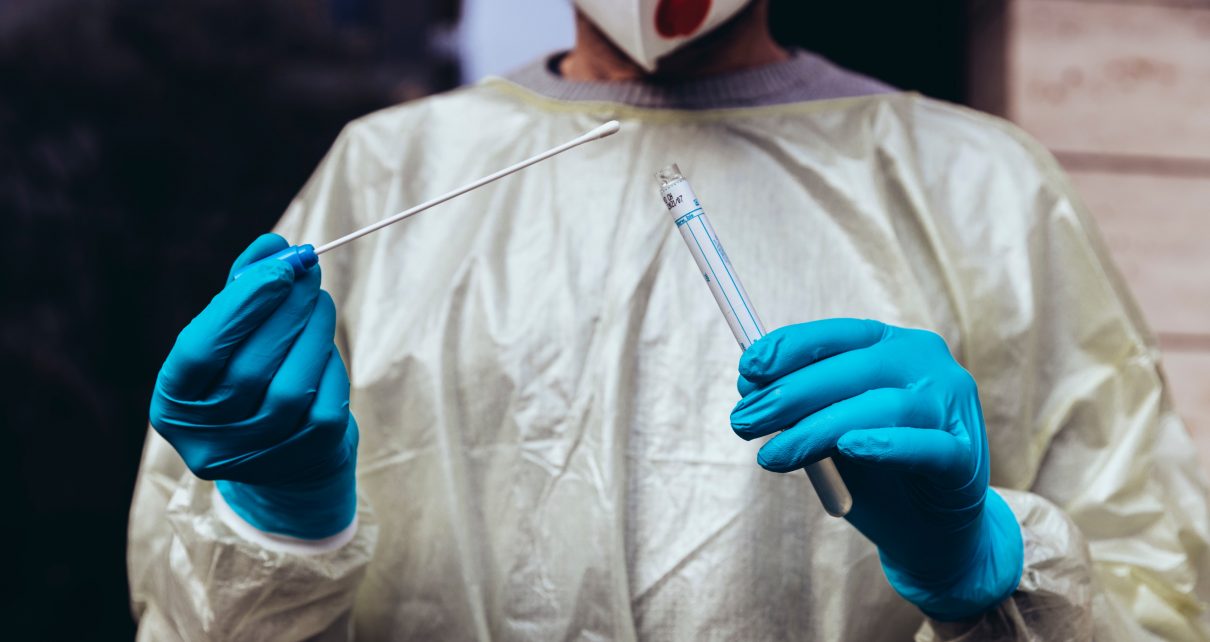Unless there is widespread testing for COVID-19, experts warn, cases will surge as governments reopen more businesses and public spaces. But there is still a woeful shortage of diagnostic tests for coronavirus infections, because of unprecedented demand for chemicals and supplies. The U.S., for instance, does hundreds of thousands of tests a day, but that number is still far short of the millions of daily assays recommended for a safe return to normal.
Now dozens of researchers in the U.S., Israel and Germany are pursuing a strategy to dramatically increase diagnostic capacity: group tests. By pooling samples from many people into a few groups and evaluating pools rather than individuals, the scientists think they can use fewer tests on more people. This approach could lead to the faster detection of individuals who are unwitting carriers of the disease and an ability to quickly clear others who have not been infected. The strategy has been used in the past to successfully detect cases of HIV, chlamydia, malaria and influenza, and was originally conceived during World War II to test thousands of military personnel for syphilis.
“As long as we have no vaccine, we can only stop the transmission of the virus by testing and isolation of people who are infected,” says Sandra Ciesek, director of the Geothe University Frankfurt’s Institute of Medical Virology in Germany. In mid-February, she was among the first to report that people with no symptoms could spread the virus. Since then, Ciesek has been working on a pooled testing technique to identify asymptomatic carriers. The approach “is trying to do more with the same number of tests,” says Tomer Hertz, a computational immunologist at Ben-Gurion University of the Negev in Israel, who is also developing a batch-testing strategy. There is a caveat, though: as the prevalence of the infection in a community goes up, the ability to save resources through group testing goes down.
Group testing is a numbers game. Let’s say you are examining 100 people, and one of them is positive. Normally you would do 100 diagnostic tests, searching for genetic material from the virus in each individual. But with group testing, you can divide those 100 people into five groups of 20. That gives you five pools with 20 samples, and you use one test per pool. If the first four sample pools test negative, you have eliminated 80 people with four tests. If the last pool tests positive, you retest each sample in that last pool individually to identify the one with the disease. In the end, you did 25 tests instead of 100.
That was the allure for Peter Iwen, director of the Nebraska Public Health Laboratory, which is using a pooled approach. In March Iwen was looking at an extreme shortage of testing chemicals. But it wasn’t clear that the U.S. Food and Drug Administration (FDA), which regulates this kind of diagnostic test, would allow pooled testing. He spent two weeks trying the technique before presenting data showing that it saved the lab time and ingredients to the governor of Nebraska and the FDA. Within three days, just before his supplies were about to run out, Iwen received a letter from the governor giving him “full authorization to explore and proceed with all reasonable measures to expand testing at this time.”
Later he received an e-mail from the FDA saying it would not object to pools of five samples. “We figured this was as close to an approval as one can get,” Iwen says. An FDA spokesperson told Scientific American that the agency is “open to a variety of novel testing ideas, such as specimen pooling, and encourages all test developers to reach out to us to discuss appropriate validation approaches.”
Many of the strategies under development employ computers and robotics to design the optimal number of pools or to streamline the process. Hertz and his colleagues have developed a twist that eliminates the need to test any sample twice. Rather than separating samples into distinct pools, they divide each sample among pools that overlap. For example, say you are testing those same 100 samples from before, one of which is positive. You then distribute those 100 samples, in various combinations, into 14 groups of 50. Each sample appears in six or seven different pools. With one positive case, a specific sequence of six pools should come up positive. By knowing which sample uniquely belongs to all six pools—for instance, patient 74 is the only one that appeared in pools 1, 2, 7, 9, 12 and 13—you can trace that positive result back to an exact individual without having to retest any samples. When there is more than one positive case in the mix, it gets more complicated, so the researchers designed a computer algorithm to identify all the carriers.
Hertz’s approach does have potential to make assays more efficient, says Allen Bateman, assistant director of the Wisconsin State Laboratory of Health’s Communicable Disease Division, where he oversees COVID-19 testing. But Bateman warns that diluting each sample into large pools could make the actual test less sensitive by causing it to label some positive cases of the disease as negative. Such false negatives have plagued diagnostic tests for COVID-19 since the start of the pandemic.
The biggest limitation of the batch approach, however it is done, has less to do with the test itself and more with the nature of the disease. Group testing works well as long as the prevalence of a pathogen remains low. But if there are too many positive cases in the tested specimens, most of the pools will come up positive and will have to be followed up with individual tests anyway. Hertz’s combinatorial approach works best when the prevalence of the disease in a community is no higher than 5 percent, with around 1 percent being ideal. More straightforward approaches, such as those employed by Iwen and CIesek, work when the prevalence is below 10 percent. In fact, the FDA’s message to Iwen stated that he could test pools as long as the positive test rate was below that percentage.
Right now it is uncertain how many positive cases are circulating in the U.S., which makes it difficult to figure out where pooled testing would be worthwhile. The country’s delayed rollout of COVID-19 testing allowed the virus that causes the disease to spread for weeks undetected. In Wisconsin, Bateman says that between 10 to 30 percent of tests performed in his lab come back positive. But as curves flatten and even fall, labs in the U.S. and other countries see an opportunity for group testing to ensure people are virus-free before they return to factories, hospitals or school systems.
“If you’re testing in a relatively asymptomatic population, it could be a way to monitor whether a second wave is coming, conserve resources and increase capacity,” says Benjamin Pinsky, medical director of Stanford University’s Clinical Virology Laboratory. Pinsky, who employed group testing early in the outbreak to trace community transmission of COVID-19 in the San Francisco Bay Area, says he recently thought about using the approach again when he began screening Stanford Health Care’s workforce. But he decided against it because his lab currently has the capacity to handle the 10,000 tests it performs a week.
Pooled samples might help countries contend with the three potential futures envisioned by epidemiologists: recurring small outbreaks; a second, even bigger wave of infections and deaths; or a persistent crisis. For example, Ciesek partnered with Michael Schmidt of the German Red Cross to employ the high-tech machines usually reserved for screening blood donations to perform COVID-19 group testing on patients admitted to University Hospital Frankfurt in Germany. As a result, patients with heart conditions or other ailments who may have avoided the hospital for fear of contracting the virus could be screened and placed in non-COVID units. The researchers say political leaders are pushing to expand the screening to all hospitals in Germany as the economy reopens.
“We know that when person-to-person contacts go up, there is more risk, because the virus has not gone away,” Schmidt says. “It is still in Germany. It is still in the United States. I think that creates a difficult situation, and you need a good strategy to handle it.”
Read more about the coronavirus outbreak here.



